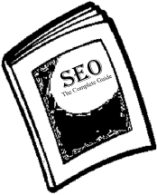
Press Releases, Backlink Ratios, and Paid Links
While many search engine optimisation (SEO) methods are becoming obsolete or frowned upon, it is worth noting that often these methods just need a slight update in order to satisfy Google and its strict SEO regime. In this second part of the SEO guide, I’ve gone through a few more dubious SEO methods and discussed whether they are now completely worthless or whether they still might have some value.
1) Press Releases
In the past, companies have spent huge portions of their SEO budget on distributing press releases in order to build their website backlink profile. However it is now questionable how valuable press releases are and whether they are simply a drain for SEO budgets; Matt Cutts recently announced that press releases have no SEO value.
However, this may not be entirely truthful. It is probably true that distributing one press release through numerous press release service websites is ineffective; duplicate content is fast becoming a big enemy of Google. This means the only link that is likely to count for much will be the original link, while all other domains supporting the same press release will not be counted.
Submitting unique press releases to good quality press release sites is most likely still effective, albeit maybe not as effective as it was. However, a few things should be kept in mind when writing press releases for a modern-day Google. Stuffing press releases with anchor text links is no longer advisable; this will probably be seen as spammy and Google may discredit the validity of the press release and its backlinks. Keep the press release unique, high quality, and credible – make sure it reads naturally and doesn’t consist of noticeable keyword stuffing. Just one or two backlinks from the press release is enough, and these backlinks should not necessarily be anchor text-rich. Brand name anchor text may be more effective, and certainly seen as less spammy than exact match anchor text.
2) Referring Domain – Backlink Ratios
A question that seems to bother a lot of people is what the perfect referring domain-backlink ratio is. The argument is that a website with a low ratio of referring domains to backlinks (e.g. 1 referring domain for every 100 backlinks) looks inorganic and perhaps a bit spammy. In Google’s latest attempt to fight spam, they may examine this ratio in order to determine the credibility of a backlink profile. Some suggest that a referring domain-backlink ratio of maybe 1:50 or greater could harm your website, and a lower ratio is healthier. However, from experience, this ratio does not necessarily harm a website’s rankings; I’ve had a website with 1 referring domain for every 100 backlinks which has ranked first position for keyphrases in a competitive market. What I would say is as long as you haven’t created your backlinks using blackhat methods such as paid links or fake websites that link hundreds of times, then you don’t need to worry too much about your referring domain-backlink ratio.
3) Paid Links and Autosubmission
Paid links and autosubmission services are unquestionably inadvisable. Many people have overreacted to Google’s threat of website penalisation since the Penguin algorithm update. Using tools such as Google’s link disavow tool is in most cases unnecessary, a point which Matt Cutts has continually stressed. However, if there is one thing you should be worried about it is paid links, while auto submission services may well result in penalisation as well. These methods should be completely forgotten; even if they’re not resulting in penalisation, they certainly won’t help.
SEO Guide Part 2 Summed Up:
Press releases and backlink ratios – don’t worry too much, just keep an eye on spam levels; one unique press release per press release submission service and no blackhat SEO methods. Paid links and autosubmission services – forget them or possibly suffer some severe consequences. See more thoughts on dubious SEO methods in part one of the SEO guide.
